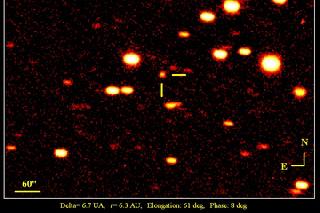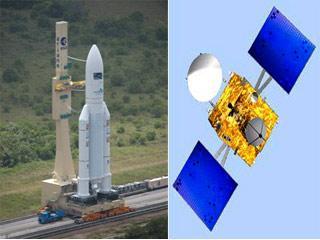
Comet C/2012 S1 (ISON) photographed at the RAS Observatory near Mayhill, NM on Sept. 22, 2012, by amateur astronomers Ernesto Guido, Giovanni Sostero and Nick Howes of the Remanzacco Observatory. Photo: Remanzacco Observatory/Ernesto Guido, Giovanni Sostero & Nick Howes.
LONDON (PTI): A comet which shines 15 times brighter than the moon and potentially visible in broad daylight will fly by the Earth next year, giving humans a chance to witness one of the most spectacular events.
Comet ISON is visiting the inner solar system and is set to put on spectacular views for the Northern Hemisphere across November and December in 2013 as it heads toward the Sun, the Daily Mail reported.
The comet, discovered by astronomers in Russia using the International Scientific Optical Network telescope, will pass within two million miles of the sun's surface.
The comet, researchers say, is supposed to be on a 'parabolic' orbit which means it probably originated from the outer skirts of the solar system from the Oort cloud - a mass of icy debris which lies 50,000 times further from the sun than the Earth.
It is currently moving inwards from beyond Jupiter, and as it approaches the Earth, the 'dirty snowball' could produce a dazzling display, burning brighter than the moon and potentially being visible in broad daylight.
Comet ISON may prove to be brighter than any comet of the last century, visible even in broad daylight, and this may end up being its one and only trip to the solar system, as its trajectory may see it plunge into the sun in a fiery death.
Comets are dusty balls of ice, which generally originate from the Kuiper belt - a region of icy small bodies beyond Neptune. Occasionally, a comet gets dislodged from its orbit, and plunges in to the inner solar system.
Halley's comet is the most well-known, named after Edmond Halley who noted the regular 75-76-year appearance of a comet, and predicted it would return in 1758. Halley's comet has passed within a fraction of the Earth before - in 1910 the Earth even moved through the comet's tail.
"This is a very exciting discovery. The comet looks like it could become a very spectacular sight in the evening sky after sunset from the UK in late November and early December next year," vice-president of the Society for Popular Astronomy Robin Scagell was quoted as saying by the paper.
 Previous Article
Previous Article Next Article
Next Article













The Indian Air Force, in its flight trials evaluation report submitted before the Defence Ministry l..
view articleAn insight into the Medium Multi-Role Combat Aircraft competition...
view articleSky enthusiasts can now spot the International Space Station (ISS) commanded by Indian-American astr..
view article